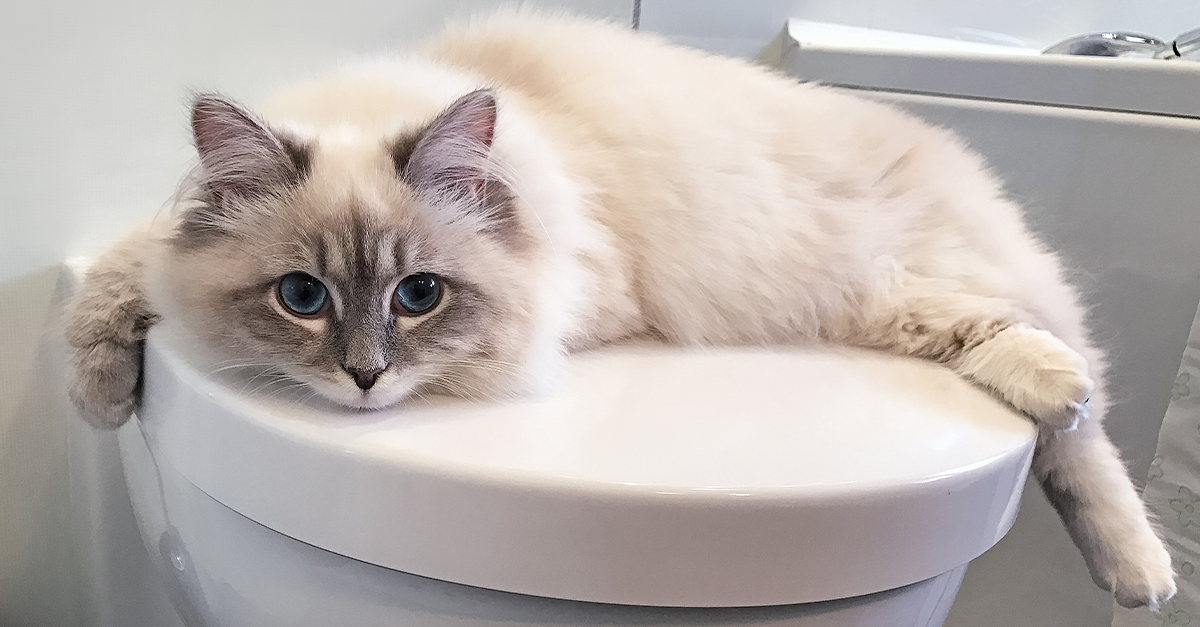Why Flushing Cat Poop Down Your Toilet May Cause Problems - Recommendations for Safe Handling
Why Flushing Cat Poop Down Your Toilet May Cause Problems - Recommendations for Safe Handling
Blog Article
Do you find yourself on the lookout for critical info on Can You Flush Cat Poo or Litter Down the Toilet??

Intro
As pet cat owners, it's important to be mindful of just how we dispose of our feline friends' waste. While it may seem practical to flush cat poop down the toilet, this technique can have damaging consequences for both the atmosphere and human wellness.
Alternatives to Flushing
Luckily, there are safer and extra liable ways to dispose of pet cat poop. Take into consideration the following options:
1. Scoop and Dispose in Trash
One of the most usual method of taking care of feline poop is to scoop it right into a naturally degradable bag and toss it in the garbage. Be sure to utilize a dedicated clutter scoop and throw away the waste quickly.
2. Use Biodegradable Litter
Choose eco-friendly cat trash made from products such as corn or wheat. These litters are environmentally friendly and can be safely disposed of in the garbage.
3. Hide in the Yard
If you have a lawn, think about burying cat waste in a designated location away from vegetable yards and water resources. Make sure to dig deep sufficient to avoid contamination of groundwater.
4. Set Up a Pet Waste Disposal System
Invest in a family pet waste disposal system particularly developed for feline waste. These systems use enzymes to break down the waste, decreasing odor and ecological effect.
Wellness Risks
In addition to ecological issues, purging cat waste can also position health threats to human beings. Pet cat feces might consist of Toxoplasma gondii, a bloodsucker that can create toxoplasmosis-- a potentially severe ailment, especially for expectant women and people with damaged body immune systems.
Ecological Impact
Flushing pet cat poop introduces hazardous pathogens and bloodsuckers into the water system, positioning a considerable danger to water environments. These contaminants can negatively affect marine life and concession water quality.
Conclusion
Accountable animal possession prolongs beyond giving food and shelter-- it likewise involves appropriate waste management. By refraining from flushing feline poop down the commode and going with different disposal methods, we can lessen our environmental footprint and protect human wellness.
Why Can’t I Flush Cat Poop?
It Spreads a Parasite
Cats are frequently infected with a parasite called toxoplasma gondii. The parasite causes an infection called toxoplasmosis. It is usually harmless to cats. The parasite only uses cat poop as a host for its eggs. Otherwise, the cat’s immune system usually keeps the infection at low enough levels to maintain its own health. But it does not stop the develop of eggs. These eggs are tiny and surprisingly tough. They may survive for a year before they begin to grow. But that’s the problem.
Our wastewater system is not designed to deal with toxoplasmosis eggs. Instead, most eggs will flush from your toilet into sewers and wastewater management plants. After the sewage is treated for many other harmful things in it, it is typically released into local rivers, lakes, or oceans. Here, the toxoplasmosis eggs can find new hosts, including starfish, crabs, otters, and many other wildlife. For many, this is a significant risk to their health. Toxoplasmosis can also end up infecting water sources that are important for agriculture, which means our deer, pigs, and sheep can get infected too.
Is There Risk to Humans?
There can be a risk to human life from flushing cat poop down the toilet. If you do so, the parasites from your cat’s poop can end up in shellfish, game animals, or livestock. If this meat is then served raw or undercooked, the people who eat it can get sick.
In fact, according to the CDC, 40 million people in the United States are infected with toxoplasma gondii. They get it from exposure to infected seafood, or from some kind of cat poop contamination, like drinking from a stream that is contaminated or touching anything that has come into contact with cat poop. That includes just cleaning a cat litter box.
Most people who get infected with these parasites will not develop any symptoms. However, for pregnant women or for those with compromised immune systems, the parasite can cause severe health problems.
How to Handle Cat Poop
The best way to handle cat poop is actually to clean the box more often. The eggs that the parasite sheds will not become active until one to five days after the cat poops. That means that if you clean daily, you’re much less likely to come into direct contact with infectious eggs.
That said, always dispose of cat poop in the garbage and not down the toilet. Wash your hands before and after you clean the litter box, and bring the bag of poop right outside to your garbage bins.
https://trenchlesssolutionsusa.com/why-cant-i-flush-cat-poop/

I'm certainly very serious about Can You Flush Cat Poo or Litter Down the Toilet? and I am hoping you enjoyed reading my blog posting. Liked our blog? Please share it. Help another person find it. Thank you for your time. Kindly check up our website back soon.
Request Estimate Report this page